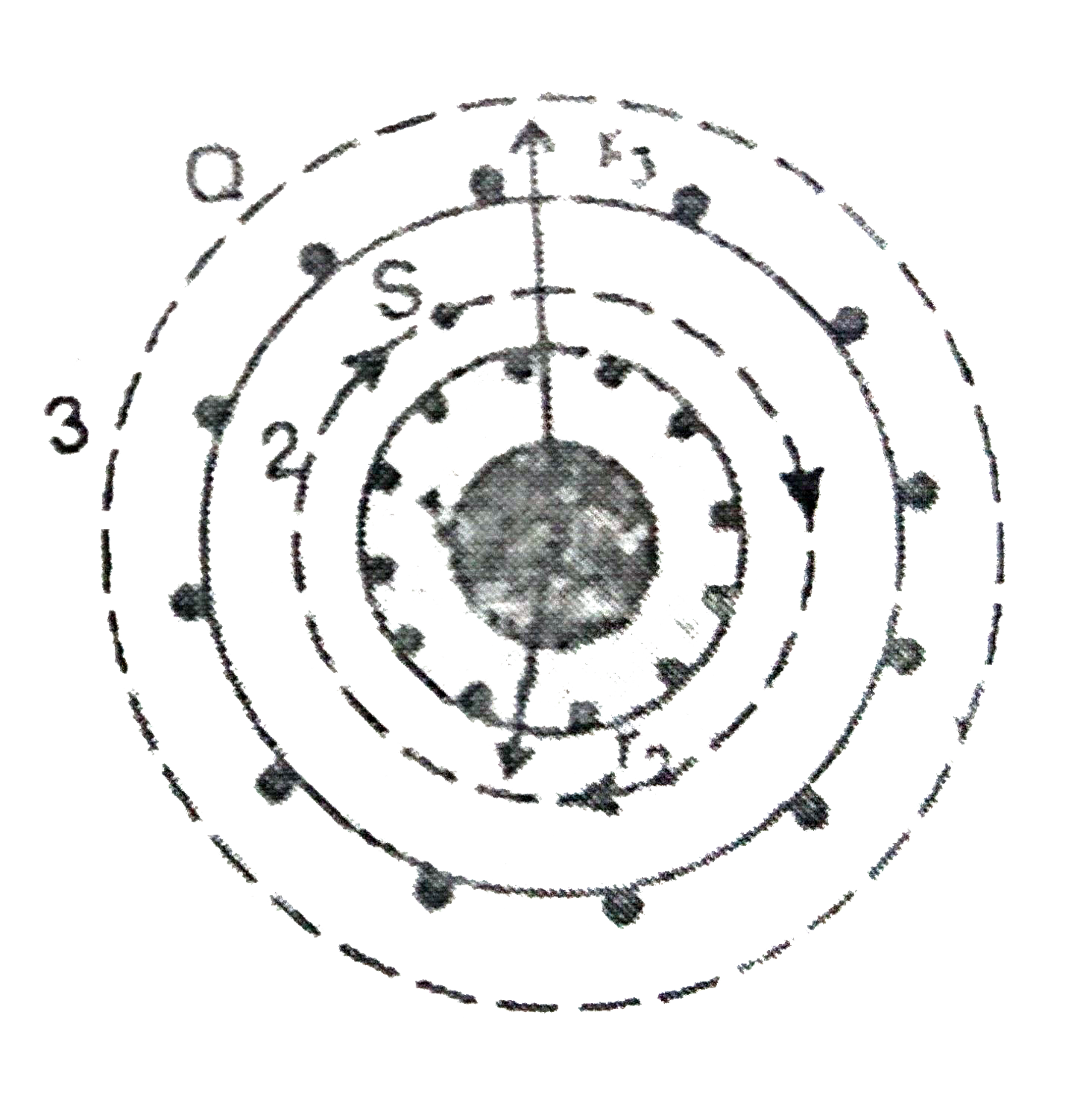Consider the two idealised systems (i) a parallel plate capacitor with large plates and small separation and (ii) a long solenoid of length L>>R radius of cross-section In (i) E is ideally treated as a constant between plates and zero outside. In (ii) magnetic field is constant the solenoid and zero outside. these idealised assumptions, however, contradict fundamental laws as below
case(i) contracdicts Gauss's law for electrostatic fields.
case(ii) contracdicts Gauss's law for electrostatic fields.
case (i) agrees with ∮→E.→dl=0
case (i) agrees with ∮→H.→dl=Ien
The correct Answer is:B
According to Gauss's law in magnetism ∮→.Overset→(Ds)=0, which implies that number of mangetic field lines entering the Gaussian surface is equa to the number of magnetic field line leaving it. Therefore, case (ii) is not possible.
Topper's Solved these Questions
- BOOK - NCERT FINGERTPS ENGLISHCHAPTER - MAGNETISM AND MATTER EXERCISE - ASSERTION AND REASON15videos
MAGNETISM AND MATTER
- BOOK - NCERT FINGERTPS ENGLISHCHAPTER - MAGNETISM AND MATTER EXERCISE - Magnetism And Gauss'S Law2videos
MAGNETISM AND MATTER
- BOOK - NCERT FINGERTPS ENGLISHCHAPTER - MAGNETISM AND MATTER EXERCISE - HIGHER ORDER THINKING SKILLS (HOTS)8videos
MAGNETISM AND MATTER
- BOOK - NCERT FINGERTPS ENGLISHCHAPTER - ELECTROSTATIC POTENTIAL AND CAPACITANCE EXERCISE - Assertion And Reason15videos
ELECTROSTATIC POTENTIAL AND CAPACITANCE
- BOOK - NCERT FINGERTPS ENGLISHCHAPTER - MOVING CHARGES AND MAGNETISM EXERCISE - Assertion And Reason15videos
MOVING CHARGES AND MAGNETISM
Similar Questions
Consider the two idealized systems: (i) a parallel plate capacitor with large plates and small separation and (ii) a long solenoid of length L>>R, radius of cross-section. In (i) →E is ideally treated as a constant between plates and zero outside. In (ii) magnetic field is constant inside the solenoid and zero outside. These idealised assumptions, however, contradict fundamental law as below:
View Solution(a) How is a toroid different from a solenoid?
(b) Show that in an ideal toroid, the magnetic field (i) inside the toroid and (ii) outside the toroid at any point in the open space is zero.
 View Solution
View Solution
Knowledge Check
- Question 1 - Select One
Consider the two idealised systems (i) a parallel plate capacitor with large plates and small separation and (ii) a long solenoid of length L>>R radius of cross-section In (i) E is ideally treated as a constant between plates and zero outside. In (ii) magnetic field is constant the solenoid and zero outside. these idealised assumptions, however, contradict fundamental laws as below
Acase(i) contracdicts Gauss's law for electrostatic fields.Bcase(ii) contracdicts Gauss's law for electrostatic fields.Ccase (i) agrees with ∮→E.→dl=0Dcase (i) agrees with ∮→H.→dl=Ien - Question 2 - Select One
A parallel- plate capacitor with plate area A and separation between the plates d, is charged by a constant current i. Consider a plane surface of area A/2 parallel to the plates and drawn symmetrically between the plates. Find the displacement current through this area.
AIBI2CI4DI8
A parallel- plate capacitor with plate area A and separation between the plates d, is charged by a constant current i. Consider a plane surface of area A/2 parallel to the plates and drawn summetrically between the plates. Find the displacement current through this area.
View SolutionA parallel- plate capacitor with plate area A and separation between the plates d, is charged by a constant current i. Consider a plane surface of area A/2 parallel to the plates and drawn summetrically between the plates. Find the displacement current through this area.
View SolutionConsider a parallel plate capacitor is charged by a constant current I, with plate area A and separation between the plates d. Consider a plane surface of area A/4 parallel to the plates and drawn symmetrically between the plates. Find the displacement current through this area.
View SolutionA parallel plate capacitor is charged by a battery. After some time the battery is disconnected and a dielectric slab of dielectric constant K is inserted between the plates. How would (i) the capacitance, (ii) the electric field between the plates and (iii) the energy stored in the capacitor, be affected ? Justify your answer.
View SolutionA parallel plate capacitor of plate area A and plate separation d is charged to potential difference V and then the battery is disconnected. A slab of dielectric constant K is then inserted between the plates of the capacitor so as to fill the space between the plates. If Q, E and W denote respectively, the magnitude of charge on each plate, the electric field between the plates (after the slab is inserted), and work done on the system, in question, in the process of inserting the slab, then
View SolutionA parallel plate capacitor each with plate area A and separation ‘d’ is charged to a potential difference V. The battery used to charge it is then disconnected. A dielectric slab of thickness d and dielectric constant K is now placed between the plates. What change if any, will take place in
(i) charge on the plates
(ii) electric field intensity between the plates,
(iii) capacitance of the capacitor
Justify your answer in each caseView Solution

